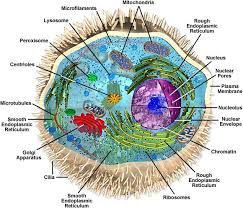Symbiogenesis

Athough examples of interdependent (symbiotic) relationships abound in Nature, very few scientists realized that the evolution of cells containing a nucleus (eukaryotes) was the result of symbiogenesis until the late twentieth century
Both plant cells and animal cells contain symbionts which were once single-cell bacteria: chloroplasts in the case of plants, mitochondria in the case of all animals. In both cases the symbionts play a crucial role; they are responsible for metabolism.
In the late 1890s a German scientist suggested that the chloroplasts in plant cells that made photosynthesis possible had originally been independent single-cell cyanobacteria. He conjectured that these ancient microbes had over time had been captured by eukaryotic cells to do the metabolic task of converting sunlight into energy.
The idea was expanded later by at least two other scientists, most importantly Konstantin Mereschovsky, who published his book on the subject in the early 1900s and still later by an American biologist, Lynn Margulis. The idea was not accepted in biology.
Lynn Margulis worked persistently over decades to make the scientific community see the evidence. She wrote extensively on the subject in the 1960s and 1970s, presenting many forms of evidence in her effort to explain how independent microbes could merge to develop more robust life forms. Her most familiar example was the mitochondria organelle in eukaryotic cells. Mitochondria have their own DNA but serve a specific function in eukaryotic cells.
Symbionts seemed to challenge the prevailing notion of gradual evolution by adaptation. But the evidence became so compelling that by the 1980s symbiogenesis was accepted as part of evolutionary theory. The long resistance to this concept is surprising, given the enormous amount of evidence from plant, fungi and animal life presented over many years. .
